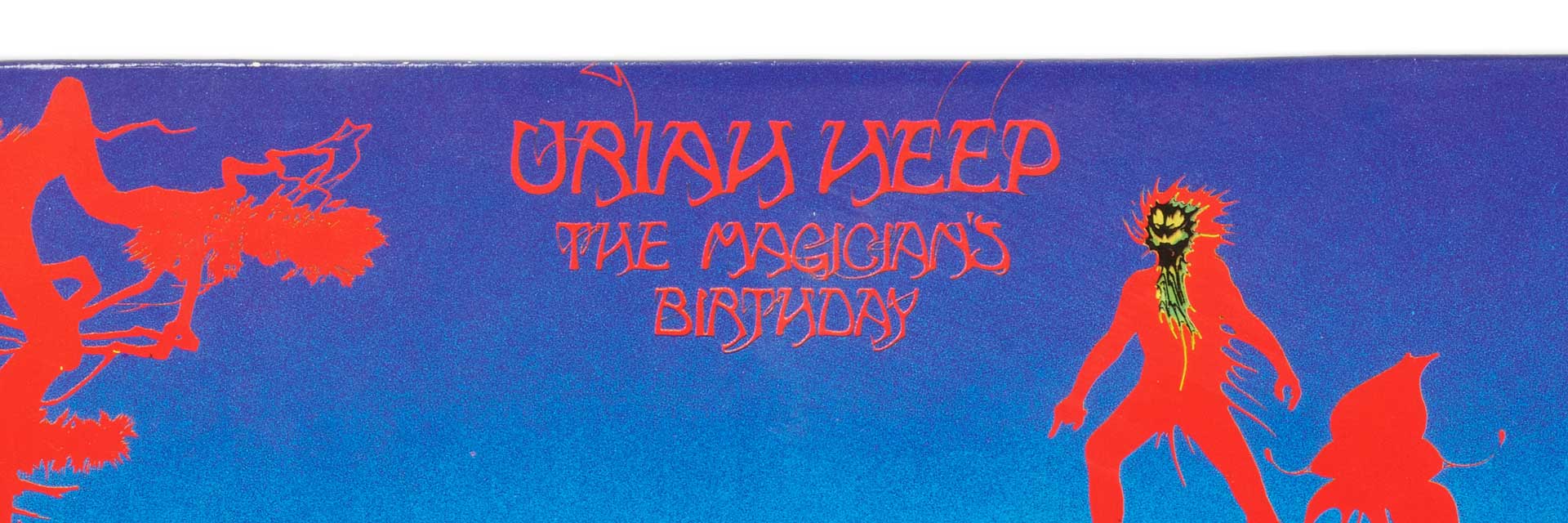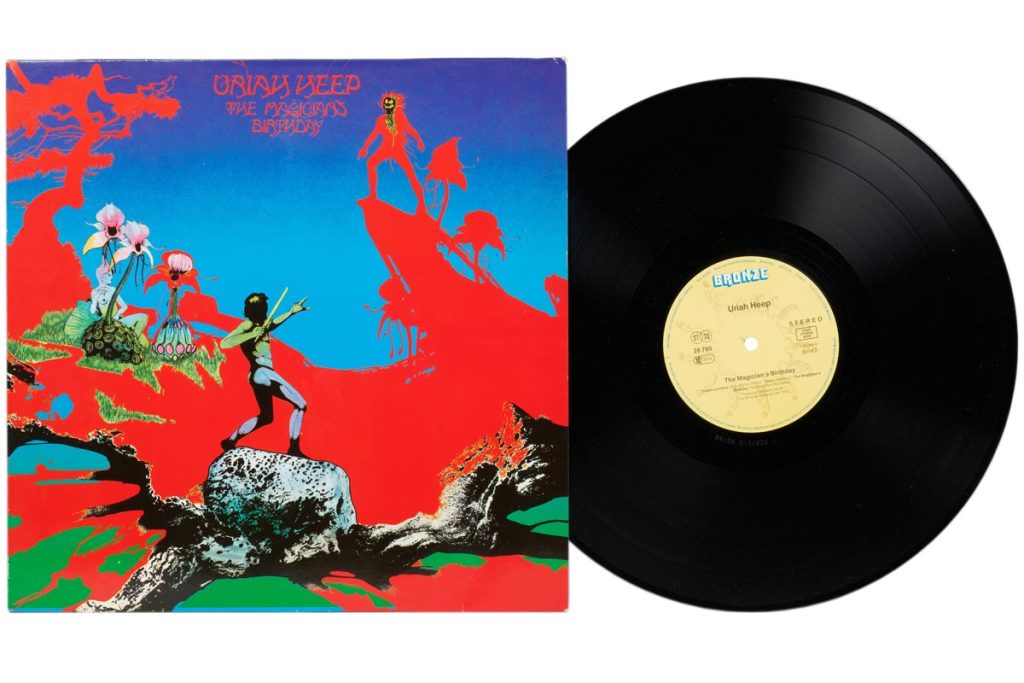Forever Young – celebrating a Classic Album’s 50th anniversary
Few hard rock bands had to take such scathing judgments from the trade press as Uriah Heep. Their songs were often dismissed as “cliché rock” or “party rock”. Rolling Stone in particular kept taking swings at them, the message being along the lines of, “You’re either into music or you’re into Uriah Heep”. The critics couldn’t make a dent in the band’s success, though. In fact, things looked great for the five brits in 1972. The line-up seemed to have stabilized at long last, the predecessor to The Magician’s Birthday, Demons and Wizards, was being well-received by the audience, and the band was on tour for the entire year. In april and may, they gave more than 20 concerts in Germany, from late june to early august the band was touring all across the USA – and already from October 13th, they were across the pond once again, right up till Christmas. Inbetween all of that, they squeezed numerous outings on their british home soil.
Producer Gerry Bron was set to make good use of this window of opportunity and urged to record a follow-up album straight away. So, less than six months after Demons and Wizards, The Magician’s Birthday was released – just in time for Christmas sales in 1972. Obviously, the thing was a rush job, as there was little room between all the gigs. Uriah Heep simply picked up right where they had left off with the previous album – with sorcerers, demons and wizards. Even the record cover by Roger Dean looks like a sequel to Demons and Wizards.
Since there was no time for a proper concept album, several conflicting ideas made it into the titular song, making it a genuine prog-longtrack – a “harrowing, nightmarish epos” (Martin Popoff) ten minutes in length. The most amusing episode here is the oddball birthday song for the Magician – complete with weird singing (into resonating piano strings), a kazoo solo (by drummer Lee Kerslake) and a falsetto choir. The band was having fun experimenting – when you don’t have any songs worked out, spontaneous creativity is the name of the game. Front and center in the title song is a four-minute-long (!), improvised guitar-drum duet played hard and virtuosic: “It was created in a single take after a brief pub visit” (Mick Box). Over the course of the track, a psychadelic and demonic soundscape fades periodically in and out. The fades and the vocals alternating between good and evil (towards the end of the track) represent more ideas that have at least been probed on the predecessor (on the final track “The Spell”).
Facts
Recorded: September and October 1972
Released: November 1st, 1972
Label: Bronze/Island
Producer: Gerry Bron
Tracklisting
1. Sunrise – 4:04
2. Spider Woman – 2:25
3. Blind Eye – 3:33
4. Echoes In The Dark – 4:48
5. Rain – 4:00
6. Sweet Lorraine – 4:13
7. Tales – 4:09
8. The Magician’s Birthday – 10:21
Musicians
David Byron, Vocals
Mick Box, Guitar
Ken Hensley, Keyboards and Guitar
Gary Thain, Bass
Lee Kerslake, Percussion
Commentary and Trivia
- “Sunrise” is the classic opener, a real crescendo number – the sun really rises in this piece. Even the sparse beginning – organ, bass drum, hi-hat – is full of tension. “Sunrise” also became the opening piece of the concerts and remained in the band’s live program for decades.
- Uriah Heep owed their varied sound to the instrumental versatility of Ken Hensley (1945-2020). As an alternative to the organ (“Sunrise”), Hensley also switches to the second guitar, both electric and acoustic (“Spider Woman,” “Blind Eye,” “Tales”). He can also be heard on piano (“Echoes In The Dark,” “Rain”), Moog synthesizer (“Echoes In The Dark,” “Sweet Lorraine”) and even vibraphone (“Rain”).
- A wonderful ballad track (closing the first side of the record) is formed by the three consecutive pieces “Blind Eye”, “Echoes In The Dark” and “Rain” – each quieter and slower than the previous one. Ken Hensley was writing simple, beautiful melodies on an assembly line at the time.
- While Hensley provides the melancholy tunes for the album, the rest of the band contributes two simple, straightforward rock songs (“Spider Woman,” “Sweet Lorraine”) to compensate. In the USA “Sweet Lorraine” is released as a single A-side, in Spain they choose “Spider Woman”, in Japan “Sunrise”. But none of the songs becomes a really big hit.
- The 1972 band is considered the classic Uriah Heep lineup. It lasted until 1975, when Gary Thain (bass) had to leave the group – he died under mysterious circumstances in the same year. Thain’s fast, moving, improvised bass lines were unusual in hard rock of that time.
- In the U.S., the album The Magician’s Birthday reached gold status (500,000 copies sold) as early as January 1973. Uriah Heep were also always very successful in Germany. The album climbed to position 7, and the single Spider Woman reached position 14 in the German singles charts.
- The track “Sweet Lorraine” (the opener of the B-side) is a feature for the Moog synthesizer, which is not yet a matter of course in the rock music of 1972. In the middle section of the song, Hensley plays a composed Moog solo. The synthesizer was first heard on Uriah Heep in 1971 – at that time still played by a guest musician (Manfred Mann).


